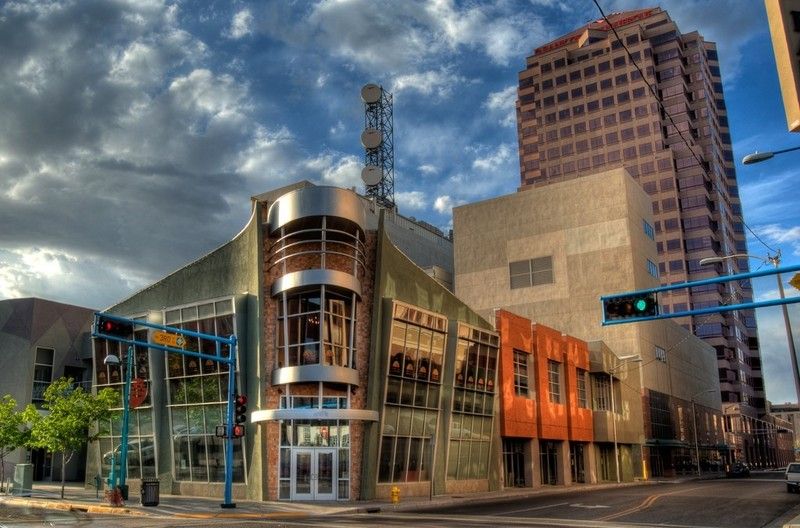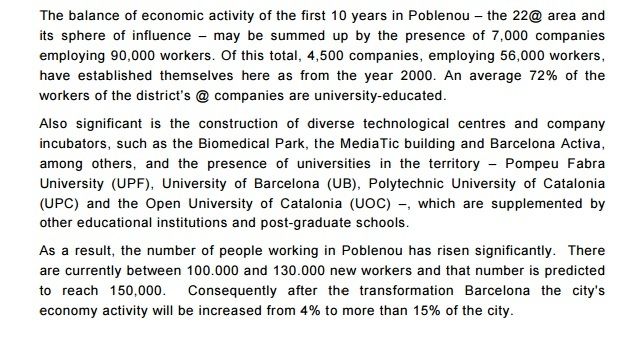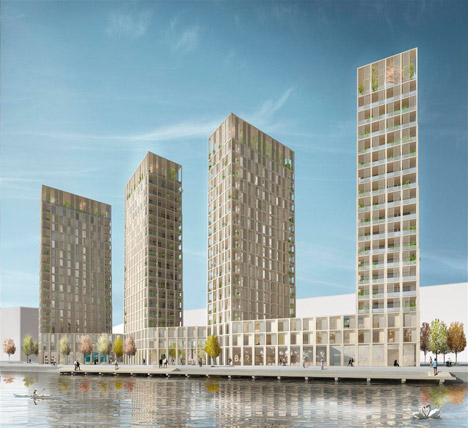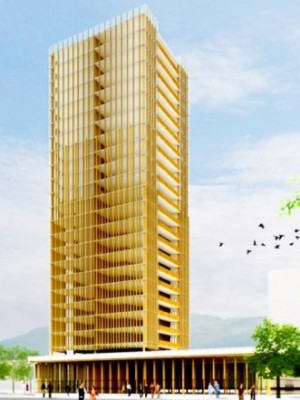Page 18 of 27
Re: Urbanism, architecture, transit, strawmen, etc.
Posted: Fri Feb 27, 2015 5:04 am
by FangKC
Jobs are shifting back to cities — and that’s good news for mass transit
Kansas City is still behind compared to other cities experiencing this trend. However, we are always about a decade behind in most things it seems.
We our doing better than some similar cities growing our downtown population though, so in time the jobs will probably follow, and growth of employment downtown will increase.
http://tinyurl.com/ntacmg6
Full report
http://cityobservatory.org/wp-content/u ... r-Jobs.pdf
Re: Urbanism, architecture, transit, strawmen, etc.
Posted: Fri Feb 27, 2015 11:25 am
by pash
.
Re: Urbanism, architecture, transit, strawmen, etc.
Posted: Sat Feb 28, 2015 2:03 am
by FangKC
The other reason I would think is the lack of new commercial office towers being built downtown. The last new buildings completed were:
J.E. Dunn headquarters in 2011;
Federal Reserve Bank Building in 2008;
the H&R Block tower in 2006;
the IRS addition in 2006;
Populous headquarters at 300 Wyandotte in 2005;
2555 Grand Avenue at Crown Center in 2003.
In most cases, jobs were just moved from one building downtown to another, so no significant net job growth there. The lack of new commercial buildings downtown also probably contributed to companies that had been downtown moving to new buildings near the Plaza, which took jobs out of the perimeter used in the study.
Some cities in the study probably don't have to contend with state incentives being used to move jobs a few miles over the border. I think that hampers KCMO a lot. If Kansas wasn't offering big incentives, I don't think as many companies would be willing leave downtown. There would be a healthier new commercial office building market downtown.
I would be willing to bet that AMC would have kept its' headquarters downtown if Kansas wouldn't have been able to give big state incentives, and AMC could have gotten an equivalent deal in downtown KCMO to move to a new building. AMC had historic ties to downtown, but they were offered a lot of money to move.
There just aren't that many options for Class A commercial space downtown right now--especially for smaller firms. Without a larger employer as anchor tenant in a new building, they just don't get built. The smaller firms also suffer because they don't have enough employees to justify a new building themselves, but they would benefit from the new space. For example, if an anchor tenant takes up 40 percent of a new building, that leaves 60 percent to rent out to smaller firms.
Sometimes I think downtown would do better if developers would just build some smaller buildings, and go after the smaller firms.
Re: Urbanism, architecture, transit, strawmen, etc.
Posted: Sat Feb 28, 2015 9:00 am
by aknowledgeableperson
You know what is funny about this report, and reports in general, is that change the time frame a little and/or the distances and you get a different picture. For instance, from CNN Money:
"Despite a short reprieve during the recession, the number of jobs moving to the nation's suburbs grew over the last decade, potentially clogging roadways and reducing job access for the poor.
Jobs within 3 miles of a city center fell from 24.5% of overall positions in 2000 to 22.9% in 2010, according to a report released Thursday from the Brookings Institution. During the same time, jobs in the outer suburbs -- between 10 and 35 miles of a city's center -- grew from 40.9% in 2000 to 43.1% in 2010.
The recession halted the flight of jobs to the suburbs for a few years as industries like manufacturing, construction and retail -- businesses that thrive in a city's outer regions -- bore the largest brunt of layoffs. But by 2010, the suburbs accounted for nearly twice the share of jobs as city centers, continuing a trend that has been underway for decades."
If the two reports are put together one might conclude that the area that is really hurting is the job market 3 miles from the city center to 10 miles out.
What would be interesting is when any report talks about jobs is how does the report define "jobs". By that one can announce a place of business is creating 100 jobs. That sounds good but if those jobs average 30 hours a week that is 3,000 hours. A full-time equivalent would be 75 jobs (3,000/40).
Re: Urbanism, architecture, transit, strawmen, etc.
Posted: Mon Mar 09, 2015 6:00 pm
by longviewmo
A reddit thread where people are comparing copious amounts of surface lots in downtown areas:
http://www.reddit.com/r/urbanplanning/c ... uffalo_ny/
Re: Urbanism, architecture, transit, strawmen, etc.
Posted: Mon Mar 16, 2015 2:41 am
by FangKC
13-story building under construction in China falls over. Whoops.
http://gizmodo.com/5304233/entire-new-1 ... -shanghai/
Re: Urbanism, architecture, transit, strawmen, etc.
Posted: Thu Mar 26, 2015 7:51 am
by FangKC
Re: Urbanism, architecture, transit, strawmen, etc.
Posted: Sat Mar 28, 2015 9:38 pm
by pash
.
Re: Urbanism, architecture, transit, strawmen, etc.
Posted: Sat Mar 28, 2015 10:24 pm
by pash
.
Re: Urbanism, architecture, transit, strawmen, etc.
Posted: Sat Mar 28, 2015 10:35 pm
by FangKC
I don't know if the data exists, but it would be interesting to see what the average commute to work time was in 1950 versus today.
I would wager that workers put a lot more mileage on their cars each year going to and from work than they did in the 1950s and 60s.
Another interesting thing would be to know what percentage of one's monthly income went to commuting back and forth to work in past decades versus today.
Re: Urbanism, architecture, transit, strawmen, etc.
Posted: Sat Mar 28, 2015 10:51 pm
by pash
.
Re: Urbanism, architecture, transit, strawmen, etc.
Posted: Tue Mar 31, 2015 7:52 pm
by pash
.
Re: Urbanism, architecture, transit, strawmen, etc.
Posted: Thu Apr 02, 2015 7:37 pm
by FangKC
This is just one little example that good and stimulating architecture doesn't have to come in a big size. Even small retail buildings can be designed with flair, and architecture--even in small ways--can contribute to improving the built environment.
This building is at 3rd and Central in downtown Albuquerque.


Photo 2: Mike Tungate via Flickr
https://www.flickr.com/photos/mtungate/ ... 4cs9dH%20/
Re: Urbanism, architecture, transit, strawmen, etc.
Posted: Thu Apr 16, 2015 2:52 pm
by FangKC
Kansas City really needs a big, overall planning document such as is being done in Barcelona.
http://www.22barcelona.com/documentacio ... lish_p.pdf
Re: Urbanism, architecture, transit, strawmen, etc.
Posted: Fri Apr 17, 2015 8:10 am
by town cow
Re: Urbanism, architecture, transit, strawmen, etc.
Posted: Fri Apr 17, 2015 12:50 pm
by WSPanic
Unless I'm reading this wrong, the PDF is a huge plan for less than one square mile of industrial property in the city center of Barcelona. It's lovely and all, but not what this city needs.
Re: Urbanism, architecture, transit, strawmen, etc.
Posted: Fri Apr 17, 2015 12:54 pm
by pash
.
Re: Urbanism, architecture, transit, strawmen, etc.
Posted: Sat Apr 18, 2015 12:50 am
by aknowledgeableperson
Or ignored.
Re: Urbanism, architecture, transit, strawmen, etc.
Posted: Sat Apr 18, 2015 3:21 am
by FangKC
I was speaking more in terms of
results. If you read the document, it was the actual follow-through of the plan that was illustrative and impressive. It was how they organized all the networks in the community to get it accomplished.
My point in posting the planning document was to show the "best practices" of creating an urban planning document; rallying political and private support behind it; using city authority to rezone, determine, and prioritize infastructure needs; and actually carrying out the plan they commissioned, instead of creating urban plans that get shoved in a drawer and are forgotten.
The Barcelona plan was mostly accomplished in a 10-year period. In addition, it needs to be pointed out that these are the results with only 60 percent of the plan accomplished. Forty-percent of the urban plan is yet to be done, and that goal should be reached by 2020--in another 5 years. Much of the growth was accomplished with small businesses employing few workers, but with growth potential. It illustrates what can be achieved by congregating urban capital, talent, and assets in an small dense area together.

Re: Urbanism, architecture, transit, strawmen, etc.
Posted: Sat Apr 18, 2015 3:37 am
by FangKC
22@Barcelona: 10 years of economic growth
The 22@Barcelona model is already being applied in other areas of the city and is a benchmark in urban, economic and social transformation in cities like Rio de Janeiro, Boston, Istanbul and Cape Town. It is a compact and diverse city that, instead of applying a territorial specialization model, employs a mixed model that favors social cohesion and fosters balanced and sustainable urban and economic development. It is an urban and economic regeneration of industrial areas that is progressive over time and adapted to pre-existing elements and new needs.
• More than 7,000 companies, shops and establishments are located in 22@
•
Half of these companies moved to the district after 2000
• The
number of residents in the 22@ district has also increased 23% since 2000, 15% more than in the rest of the city
• The estimated
number of workers in the district is 90,000, 62.5% more than in 2000 for a total increase of 56,200 workers.
The
number of companies has grown 105.5% since 2000, where there were 3,437 businesses. This increase is well above that of the province of Barcelona (57.3%) and that of Catalonia (60%).
An estimated 4,500 new companies have moved to the district since 2000, an average of 545 per year and 1.2 per day, although the most prolific era was from 2003 to 2006. Of the 4,500 companies,
47.3% are new start-ups. The rest have moved from other locations.
Finally, 27% of companies in 22@ are knowledge-intensive and three out of ten companies created after 2000 are knowledge- or technology-intensive.
http://www.22barcelona.com/content/view/887/90/lang,en/






